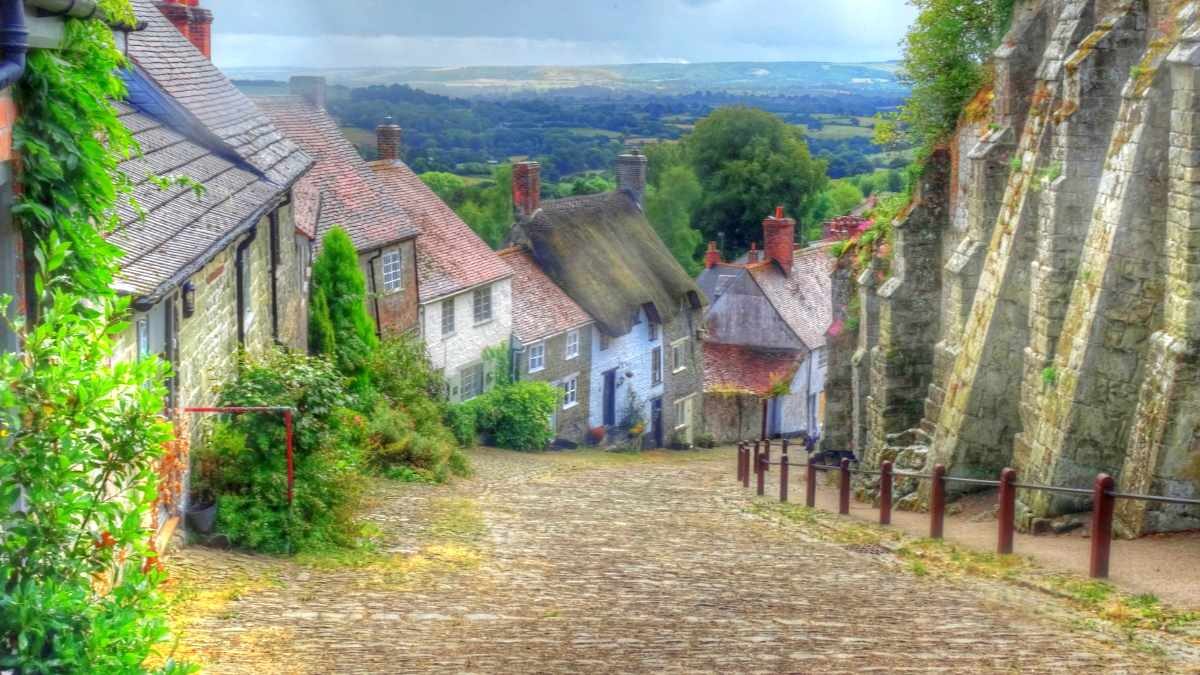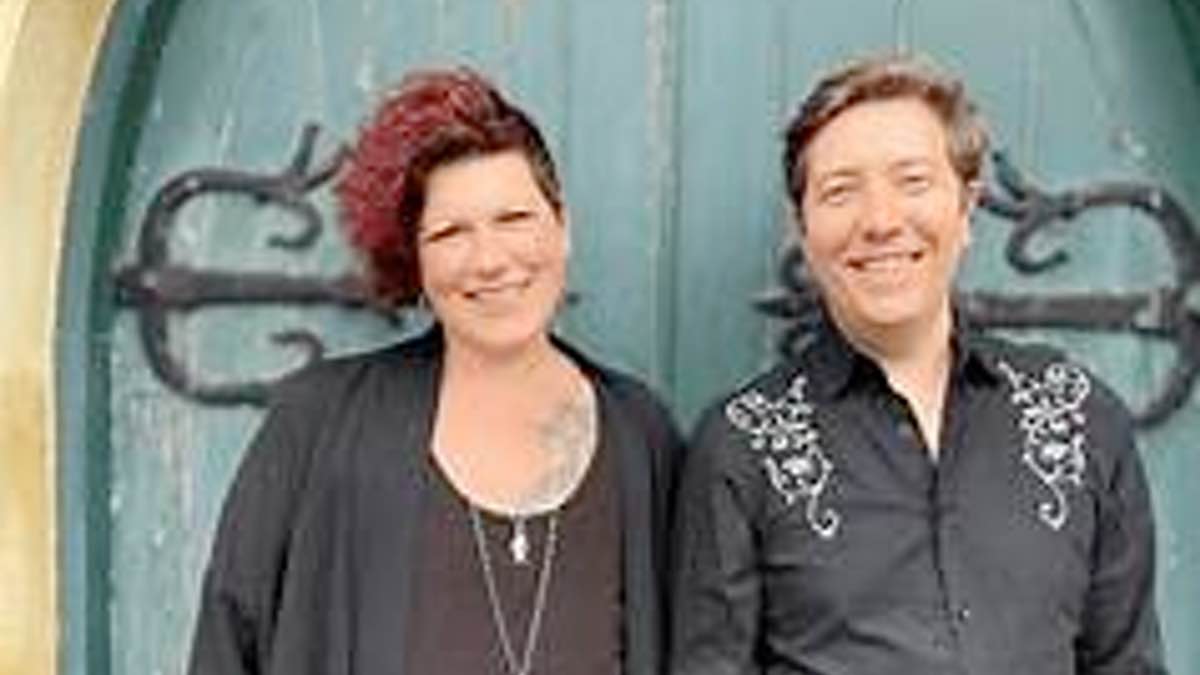Shaftesbury, a historic town in North Dorset, England.
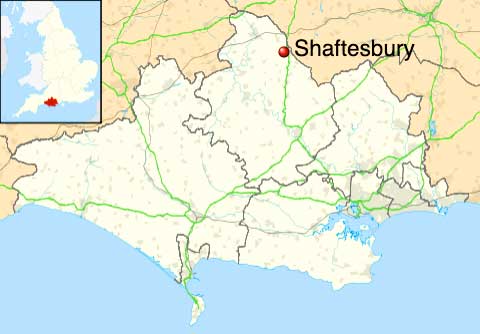
Situated on the A30 road, 20 miles (32 kilometres) west of Salisbury, near to the border with Wiltshire. Shaftesbury is the only significant hilltop settlement in Dorset, built about 215 metres (705 ft) above sea level on the edge of Cranborne Chase. The town looks over the Blackmore Vale, part of the River Stour basin, from different viewpoints it’s possible to see at far as Glastonbury Tor to the northwest.
Shaftesbury is the site of the former Shaftesbury Abbey, which was founded in 888 by King Alfred and became one of the richest religious establishments in the country, before being destroyed in the Dissolution in 1539.
Adjacent to the abbey site is Gold Hill, the steep cobbled street made famous in the 1970s as the setting for Ridley Scott’s television advertisement for Hovis bread.
Writing of Shaftesbury in 1906 in his book Highways & Byways in Dorset, Sir Frederick Treves referred to several different names for the town:
The city has had many names. It was, in the beginning, Caer Palladour. By the time of the Domesday Book it was Sceptesberie. It then, with all the affectation of a lady in an eighteenth-century lyric, called itself Sophonia. Lastly it became Shaston, and so the people call it to this day, while all the milestones around concern themselves only with recording the distances to “Shaston”.
— Sir Frederick Treves, Highways & Byways in Dorset (1906)
Some of these names may have been used more than others. The town was recorded in the Domesday Book as Sceptesberie, and the use of “Shaston” was recorded in 1831 in Samuel Lewis’s A Topographical Dictionary of England and in 1840 in The parliamentary gazetteer of England and Wales.
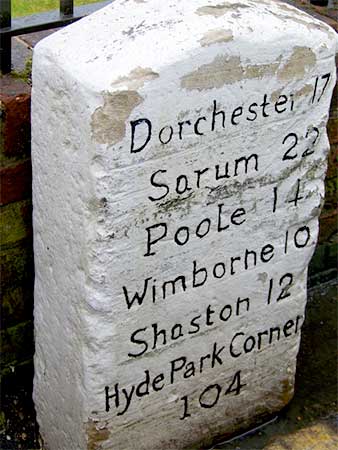
Thomas Hardy used both “Shaston” and “Palladour” to refer to the town in the fictional Wessex of his novels such as Jude the Obscure (“Caer Palladour” in the Brythonic language is “Caer Vynnydd y Paladr” or “The Hillfort of the Spears”), though the general use of “Palladour” was described by one 19th-century directory as “mere invention”.
Shaftesbury History
There is no substantive evidence that Shaftesbury was the “Caer Palladur” (or “Caer Palladwr”) of Celtic and Roman times, and instead the town’s recorded history dates from Anglo-Saxon times.
By the early 8th century there was an important minster church here, and in 880 Alfred the Great founded a burgh (fortified settlement) here as a defence in the struggle with the Danish invaders. The burgh is recorded in the early-10th-century Burghal Hidage as one of only three that existed in the county (the others being at Wareham and ‘Bredy’ – which is probably Bridport).
In 888 Alfred founded Shaftesbury Abbey, a Benedictine nunnery by the town’s east gate, and appointed his daughter Ethelgifu as the first abbess. Athelstan founded two royal mints, which struck pennies bearing the town’s name, and the abbey became the wealthiest Benedictine nunnery in England.
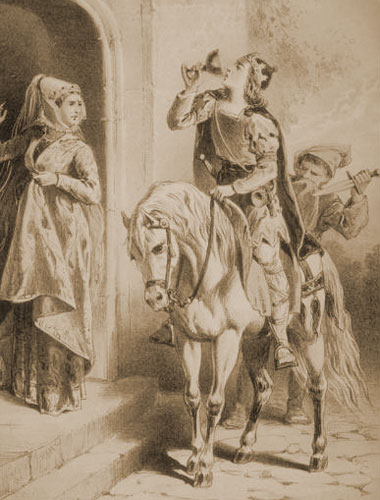
On 20 February 981 the relics of St Edward the Martyr, the teenage King of England, were transferred from Wareham and received at the abbey with great ceremony, thereafter turning Shaftesbury into a major site of pilgrimage for miracles of healing.
King Canute died here in 1035, though he was buried at Winchester. Edward the Confessor licensed a third mint for the town. By the time of the Norman conquest in 1066 Shaftesbury had 257 houses, though many were destroyed in the ensuing years of conflict, and by the time the Domesday Book was compiled twenty years later, there were only 177 houses remaining, though this still meant that Shaftesbury was the largest town in Dorset at that time.
In 1539, the last Abbess of Shaftesbury, Elizabeth Zouche, signed a deed of surrender (as part of the Dissolution of the Monasteries), the abbey was demolished, and its lands sold, leading to a temporary decline in the town.
In a Survey of Dorsetshire, written in about 1630 by Thomas Gerard of the Dorset village of Trent, Shaftesbury is described as a “faire Thorough Faire, much frequented by Travellers to and from London”.
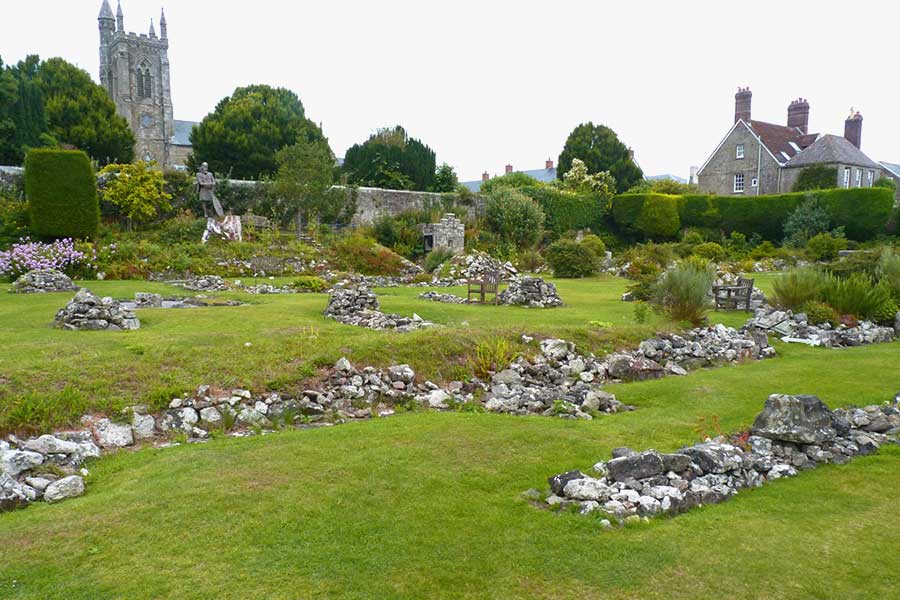
The town was broadly Parliamentarian in the Civil War, but was in Royalist hands. Wardour Castle fell to Parliamentary forces in 1643; Parliamentary forces surrounded the town in August 1645, when it was a centre of local clubmen activity (local defence vigilantes during the English Civil War). The clubmen were arrested and sent to trial in Sherborne.
In the 17th century, the cloth industry formed part of Shaftesbury’s economy, though much of the actual production took place as a cottage industry in the surrounding area. Buttonmaking also became important around this time, though with the later advent of industrialisation this subsequently declined, resulting in unemployment, starvation and emigration, seeing 350 families leaving for Canada.
Malting and brewing were also significant in the 17th and 18th centuries, and like other Dorset towns such as Dorchester and Blandford Forum, Shaftesbury became known for its beer.
In the 18th century the turnpike roads which met at Shaftesbury ensured that the town had a good coaching trade, but the railways bypassed the town, which had consequences for Shaftesbury’s economy.
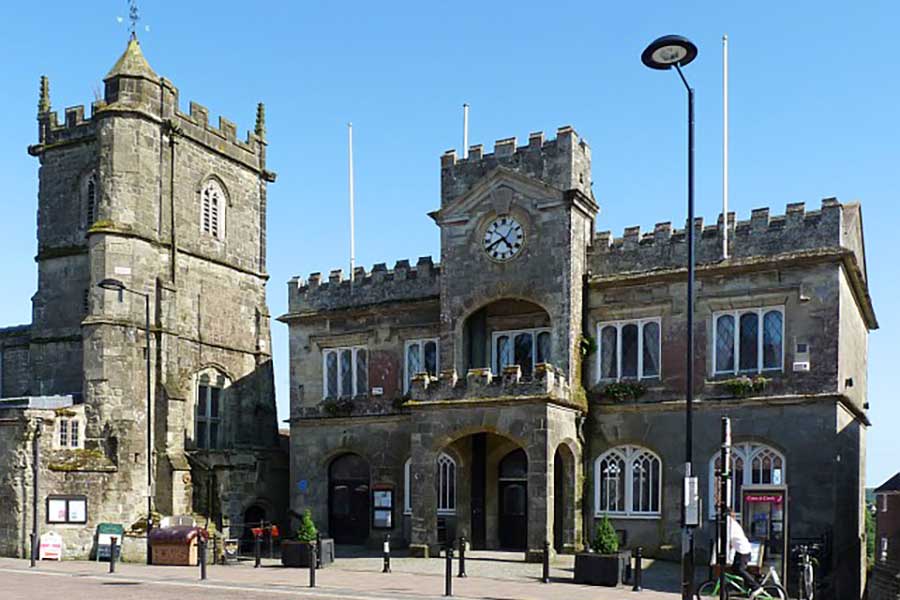
The town hall was built in 1827 by Earl Grosvenor after the guildhall was pulled down to widen High Street. It has been designated by English Heritage as a grade II listed building.
In 1918 Lord Stalbridge sold a large portion of the town, which was purchased by a syndicate and auctioned piece by piece over three days. Most of Shaftesbury’s buildings date from no earlier than the 18th century, as the Saxon and most of the medieval buildings have not survived.
During the 1950s and onwards, a large amount of low-cost housing has been established around the outskirts of Shaftesbury.
Attractions and things to See
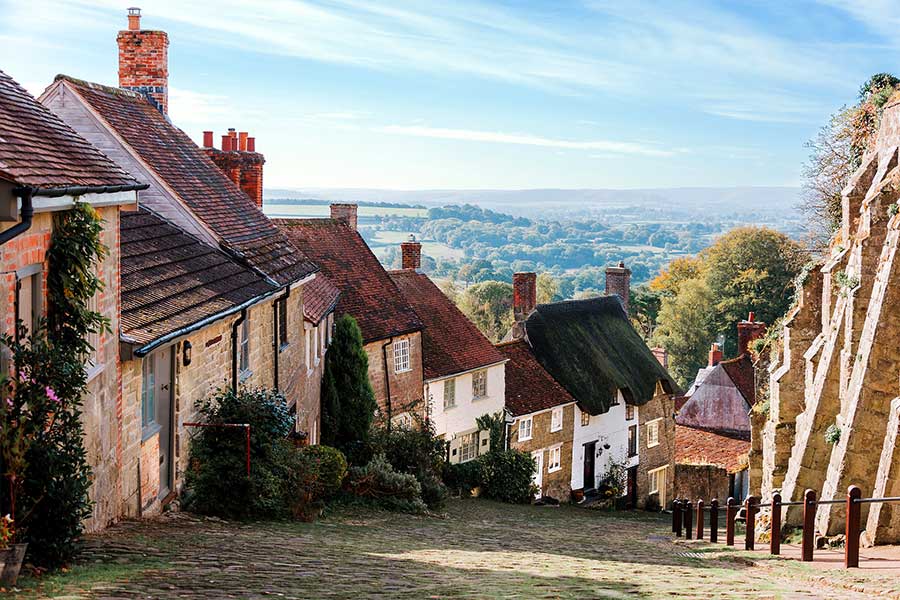
Shaftesbury Arts Centre was established in 1957 and stages a variety of exhibitions, performances, workshops and training courses. It is based in the old covered market in the town centre and is a charitable company that is run wholly by its volunteer members.
Shaftesbury has two museums: Gold Hill Museum at the top of Gold Hill, and Shaftesbury Abbey Museum in the abbey grounds.
Gold Hill Museum was founded in 1946 and displays many artefacts that relate to the history of Shaftesbury and the surrounding area, including Dorset’s oldest fire engine, dating from 1744. Shaftesbury Abbey Museum tells the story of the abbey and also has a herb garden and medieval orchard.
Shaftesbury Snowdrops is a Diamond Jubilee Community Legacy with the aim of creating a series of free and accessible snowdrop walks. The project was started in the winter of 2012 with the planting of 60,000 bulbs. Since 2013 there has been an annual Snowdrop Festival to encourage tourists to see the snowdrops in flower.
Gold Hill Fair usually occurs in the first weekend of July and has food stalls, arts stalls and local music that can be found in the abbey ruins.
There are many shops, places to eat and drink in Shaftesbury and some interesting walks around the town and surrounding area.
